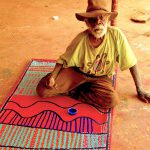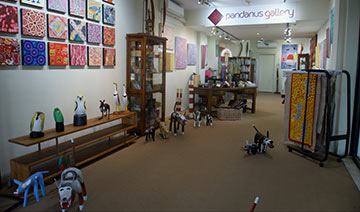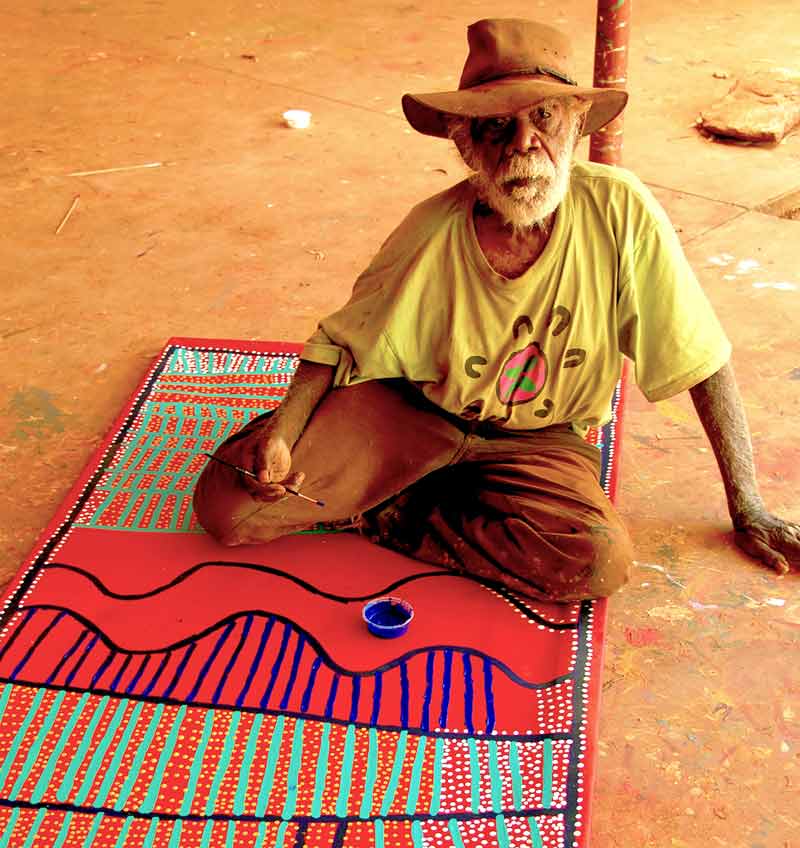Stunning Shorty Jangala Robertson Art For Sale
Pandanus Aboriginal Art proudly displays a collection of artwork from Australia’s Indigenous population. With works ranging from large scale paintings to genuine artifacts such as boomerangs and coolamons, we have an extensive collection of work that encapsulates the essence and style of art that is unique to the Australian Indigenous community. Our aim is to help bridge the divide between Australia’s remote artist communities and the general population. With this, we are proud to present an extensive collection of works from our country’s most renowned artists, as well as talented up and coming younger artists who wish to retain their heritage.
We have an extensive collection of pieces from respected artist Shorty Jangala Robertson, whose work has been exhibited throughout Australia, Europe, and the United States.
The Art of Jangala Robertson
Shorty grew up living a nomadic, hunter gatherer life with his parents, travelling around vast desert remote desert country around Jila, in the Tanami Desert region of central Australia where he was born. As a very young child, he was caught up in the Coniston massacre of Aboriginal people in 1928 but was saved by a relative who hid him in the bush during the attack. This took place at Wantaparri near his birthplace. His mother found him and during his youth successfully ‘kept ahead’ of the Dept of Welfare responsible for the rounding up of Aboriginal children. As a result, Shorty spent most of his youth living as a traditional Walpiri Aboriginal, and was deeply versed in all aspects of Aboriginal Law and Culture. Later, he was involved in jobs and work activities around the central desert cattle properties and Alice Springs.
Although he was aware of the Contemporary Aboriginal Art movement that effectively began in 1971 at Papunya, Shorty was not tempted to join in – he watched and waited until he was ready.
In about 2004, Shorty was living in the remote community of Yuendemu, approx 300 klm north west of Alice Springs and close to the Tanami Desert. In that year, he began to paint with the confidence and clarity of an experienced artist, working with the Warakurlangku Aboriginal Art Centre (current name).
Although he only painted for about 10 years Shorty became widely known for his inspiring Dreamtime paintings of Emu, Acacia, Flying Ant and Water. His style is distinctly different from the earlier Aboriginal artists using a combination of painted lines, dotting and colour fields appropriate for his subjects. The sense of movement, rhythm, form and light are always evident in his work. Towards the end of his artistic career, the subject of Water Dreaming became a more common focus and has resulted in some of his most magnificent paintings, especially those of large scale.
His Water Dreaming paintings can be seen to imply ‘cause and effect’ where water – in all of its physical and ethereal manifestations – becomes a ‘tool’ of the Ancestors in the shaping of the landscapes and sub-terranean water systems, with which he was intimately familiar. He uses strong colours on dark grounds with combinations of yellow lines representing lightening and dotting with a range of strong colours that represent rain and hail simultaneously engaged in the creation process. This style is distinctly different from the Desert art movement that will be unique to him.
Sadly, Shorty died in 2014. His Dreamtime responsibilities have been passed down to his children and grandchildren some of whom are showing great promise in painting in their grandfather’s footsteps.
Contact Us




